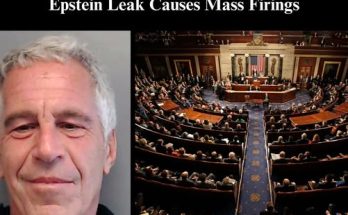The political landscape in the United States is undergoing one of its most consequential shifts in years — a transformation unfolding largely out of public view, but carrying major implications for the balance of power in Washington.
Redistricting, normally a technical and often overlooked process, has become a central front in an intensifying national struggle. Republicans, emboldened and encouraged by former President Donald Trump, are accelerating efforts across multiple states to redraw congressional districts in ways that strengthen their advantage.
This push is not incidental. It is part of a deliberate and coordinated strategy driven by Trump and his inner circle, who have pressed GOP-led legislatures to act swiftly and assertively before the next election cycle closes the window of opportunity.
As a result, states that once adhered strictly to the decade-long redistricting rhythm are now revisiting their maps mid-decade — an approach that was once rare but is rapidly becoming political standard practice.
Amid this nationwide escalation, one Democratic figure has emerged as the most forceful and outspoken critic: House Minority Leader Hakeem Jeffries.
Jeffries has issued a series of sharp, highly public responses to the GOP’s redistricting wave, framing the movement as a direct threat to fair representation and the democratic principles that underpin the U.S. political system.
North Carolina became the latest — and perhaps most heated — focal point when Republican lawmakers unveiled a new congressional map engineered to deliver at least one additional GOP-leaning seat. The plan surged through the state legislature with remarkable speed, buoyed by Trump-aligned operatives who have taken a hands-on role in local redistricting battles.
Political analysts noted immediately that the proposed boundaries heavily favored Republicans, in part by consolidating Democratic voters into fewer districts — a well-known tactic for tilting electoral outcomes.
North Carolina Senator Ralph Hise, one of the architects of the plan, made no effort to mask its intent. He stated outright that the goal was to secure “an additional congressional seat” for the GOP.
The candid admission set off an immediate firestorm among Democrats. Jeffries accused Republicans of manipulating the political landscape for partisan gain, describing the North Carolina plan not simply as an isolated maneuver but as part of a sweeping, nationalized strategy designed to lock in congressional control through map engineering rather than through voter choice.
Democrats contend that tactics such as “cracking” and “packing” distort the integrity of elections and weaken meaningful representation, particularly for minority communities.
Public hearings in North Carolina drew protests and emotional testimony. Concerned citizens warned that the new map could diminish the political influence of urban and minority voters, tilting representation away from rapidly growing population centers. Despite these objections, the state Senate approved the map quickly. It now heads to the House, where Republicans hold a commanding majority.
Because North Carolina law bars Governor Josh Stein — a Democrat — from vetoing redistricting proposals, GOP lawmakers maintain near-total control over the process. This structural imbalance has become a central point of frustration for Democrats.
Yet North Carolina is only one part of a rapidly expanding national pattern.
Across the country, Republican-led states are pursuing similar strategies.
Texas, one of the fastest-growing states in the nation, has emerged as a major battleground. GOP lawmakers there have advanced a sweeping redistricting proposal that could generate as many as five new Republican-leaning districts. Supporters say the plan reflects Texas’ shifting demographics. Critics argue that it systematically dilutes the voting power of urban and minority populations that have fueled much of the state’s growth.
Missouri has also moved forward with a controversial new map aimed at producing an additional Republican seat. But this plan has been met with fierce resistance, sparking legal challenges and grassroots petition drives. Whether the map survives judicial review remains uncertain.
In a surprising twist, even deep-blue California has waded into the national redistricting fight. Governor Gavin Newsom, widely seen as a potential 2028 presidential contender, has endorsed a ballot initiative that would temporarily suspend the state’s independent redistricting commission. If approved, state lawmakers would gain the authority to draw up to five new Democratic-leaning districts.
The move, seen by many as a direct countermeasure to GOP redistricting elsewhere, has divided Californians. Supporters argue it is a necessary strategic response to national power shifts; opponents say it undermines the principles of independence and fairness that the state championed for years. Voters will decide the matter in November.
Kansas is preparing for its own potential redistricting shake-up. Lawmakers have set aside nearly $500,000 to fund a special legislative session, widely expected to target the district represented by Democratic Rep. Sharice Davids. Adjusting the district’s boundaries could significantly weaken Democratic prospects in a heavily conservative state.
Indiana, meanwhile, has unexpectedly become part of the expanding national redistricting map. Despite already holding a 7–2 advantage in its congressional delegation, Republican lawmakers are weighing another redraw aimed at eliminating yet another Democratic-held seat. Reports indicate that the Trump White House is actively encouraging the effort, with Vice President J.D. Vance personally traveling to meet with state legislators.
Ongoing disputes in Ohio and Utah — some stretching back years — have resurfaced with new proposals, adding fuel to already tense political and legal battles.
Despite regional differences, the overarching trend is unmistakable: Republicans are deploying every available mechanism to reshape congressional representation ahead of 2026.
Jeffries argues these moves strike at the heart of democratic accountability. He has warned repeatedly that the emerging GOP maps threaten to marginalize minority communities and reduce electoral competitiveness, shifting redistricting from a procedural necessity to a partisan weapon capable of entrenching power for an entire decade.
Republicans, for their part, reject the criticism outright. They argue that their proposals follow state and federal laws and point out that Democrats have also leveraged redistricting opportunities when politically advantageous. California’s recent proposal has only strengthened that argument.
Political scientists widely agree: the redistricting battles now unfolding will play a decisive role in the 2026 congressional elections. The stakes could not be higher.
Courts, state legislatures, independent commissions, advocacy organizations, and national political figures are all poised to shape the final outcome. Every decision will ripple outward, influencing Washington’s balance of power and the direction of national policy.
Public confidence in the system may also be tested. When voters feel their representation is compromised by the shape of a district rather than the power of their ballot, trust erodes.
Jeffries’ warnings reflect these broader anxieties. To him, the battle is not merely partisan — it is about the integrity of American democracy itself.
Republicans see it differently, framing redistricting as a legitimate response to shifting populations and political realities. Both parties insist they are acting to defend democratic principles. Both believe they are fighting for the interests of their voters. And both are preparing for a protracted and high-stakes conflict.
America’s congressional map is being rewritten — not just on paper, but in ways that may reshape the country’s political future for years to come.
The consequences extend far beyond district boundaries. They may decide control of Congress. They may determine the trajectory of national governance. They may shape the political balance of power for an entire generation.
As the nation watches — often quietly, sometimes uneasily — the redistricting battle continues. And the story, with its enormous implications, is far from over.

